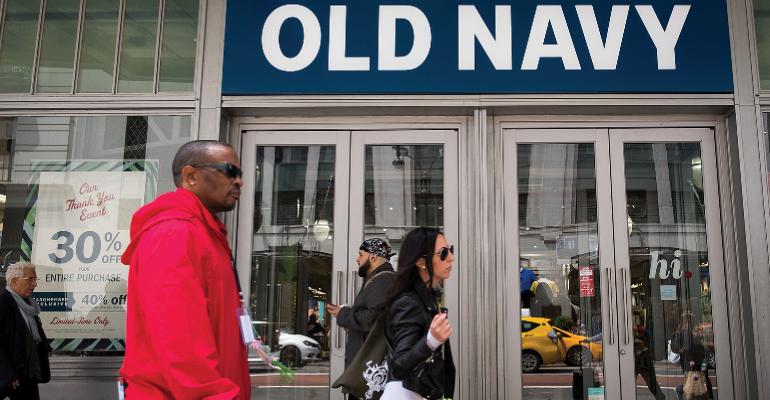(Bloomberg Opinion)—Two big names in clothing retail are getting smaller. Gap Inc. laid out the details last week of its previously announced plan to split into two companies — one that is solely its Old Navy chain, and another for everything else. Meanwhile, J. Crew Group Inc. made it official last week that it plans to spin off its Madewell chain.
Both of these splits are the right moves for two apparel businesses that have oddly similar problems: Their newer chains are doing well, but their older ones are struggling. The breakups will allow executives to focus more intently on the troubled brands’ problems.
But the plans are still risky, on their own terms and because of larger complications introduced by President Donald Trump’s trade war. The last month or so has amped up enormous tariff-related uncertainty for the apparel industry, as Trump moved to slap levies on $300 billion worth of Chinese goods, only to soon delay some of them.
Clothing retailers tend to say they will deal with this situation by negotiating with suppliers. Scale is a huge asset in such negotiations, with the biggest companies having the most leverage. Once the Gap and J. Crew empires split, they will have less muscle to flex in these discussions.
A similar dynamic exists with their relationships to their mall landlords. Consider the latest in the saga of another mall heavyweight, Forever 21. My colleagues at Bloomberg News reported this week that the company is holding discussions with Simon Property Group Inc. and Brookfield Property Partners LP about the mall operators buying a stake in the clothing chain as part of a potential bankruptcy filing. It would be similar to when landlords stepped in to save teen clothing chain Aeropostale; the landlords apparently decided owning a piece of an ailing retail chain was preferable to being stuck with a raft of vacancies.
Several retail giants have filed for bankruptcy since that 2016 Aeropostale deal without mall operators intervening. But Forever 21 might be different, in part because of its scale: With more than 800 stores, landlords may believe that it is, to steal a popular phrase from another industry, too big to fail. A question for Gap and J. Crew is whether their splits leave them too small to matter.
Of course, some of J. Crew and Gap’s peers are also slimming down, meaning they might be dealing with similar hurdles. Ascena Retail Group Inc. has sold its Maurice’s chain and is shuttering Dressbarn; Bloomberg News reported Thursday it is now considering unloading its Catherines and Lane Bryant brands. L Brands Inc. has closed its small Henri Bendel chain and sold La Senza – tiny parts of its business, to be sure. But it continues to face questions from investors about whether it should separate Victoria’s Secret and Bath & Body Works, a move that would greatly change its scale.
Overall, the benefits of a sharper focus (and, in J. Crew’s case, the ability to use IPO proceeds to pay down some debt) will probably make these separations worthwhile. But even the best breakups are challenging — and the uncertain trade and mall retail environments are likely to make them even more so.
To contact the author of this story: Sarah Halzack at [email protected].
To contact the editor responsible for this story: Michael Newman at [email protected].
© 2019 Bloomberg L.P.




